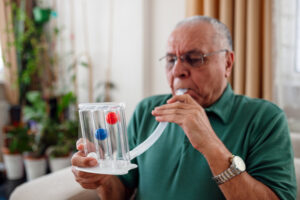COPD Treatments: What Options Are Available For Patients

Smoking Cessation
One of the first things doctors recommend COPD patients is to quit smoking. It is challenging to treat pulmonary ailments in smokers because nicotine exacerbates the symptoms of COPD. People can quit tobacco in several ways, from going cold turkey to using nicotine patches or gum. Having a support system would help; people are likely to follow through with something if they see others succeed.
Oxygen Therapy
COPD causes difficulties in breathing, which means patients might not get enough oxygen in their blood. In oxygen therapy, patients use small, portable devices to get the right amount of oxygen in their bodies. This therapy protects patients from oxygen deprivation and organ damage. It also helps them stay active and sleep better.
Complementary Therapies
Besides providing oxygen, therapy can also address deep-seated issues that keep people attached to erratic breathing patterns. Complementary treatments like behavioral therapy, pulmonary rehabilitation, yoga, and guided muscle relaxation could help. These methods allow patients to identify their triggers. It also provides them a framework for their chores and activities, keeping them from feeling overwhelmed.
Age-Specific COPD Treatments
Typically, COPD patients first notice symptoms after turning 40. Patients belonging to this age group would benefit from pulmonary rehabilitation activities like breathing techniques, mental health support, social support, and exercise. Hospices and palliative care providers could give these to older patients.
Some doctors recommend supplemental oxygen, as well as tobacco cessation. When older patients stop smoking, they may experience a reduction in their symptoms. Lung surgery could be an option, but not for patients with cardiovascular disease.
Maintaining A Healthy Diet And Exercising
A healthy diet helps people better cope with this condition. Doing all sorts of activities can be tiring if you have COPD—even something like eating is a struggle. Patients can ease the strain by eating smaller, more frequent meals. They could also take supplements, so they don’t have to ingest large portions to get the nutritional benefits they need.
Physical activity can strengthen the muscles patients need for breathing, but not all exercise is good for people with COPD. Patients need to seek their doctor’s clearance for all exercises. Yoga, tai chi, and other exercises in pulmonary rehabilitation programs are your best bets.
Dealing with Progressing Symptoms
Note that symptoms can get worse even if patients undergo treatment. People with lung infections or heart conditions could have progressive symptoms. Seek immediate medical attention if you find it difficult to walk or talk, have an irregular heart rate, are breathing hard and fast, have a new or worsening chest pain, or have blue lips or fingernails.
Conclusion
People with COPD can live fulfilling lives as long as they receive the care and medication they need. Older patients, in particular, need to address more issues, so they should have care providers knowledgeable in respiratory ailments and their treatment.
At Morristown Post Acute Rehabilitation & Nursing Center, we are revolutionizing care delivery. We provide healthcare and rehabilitation in Morristown, NJ, specializing in respiratory care, respite services, long-term care, and more. Schedule a call today to learn more!